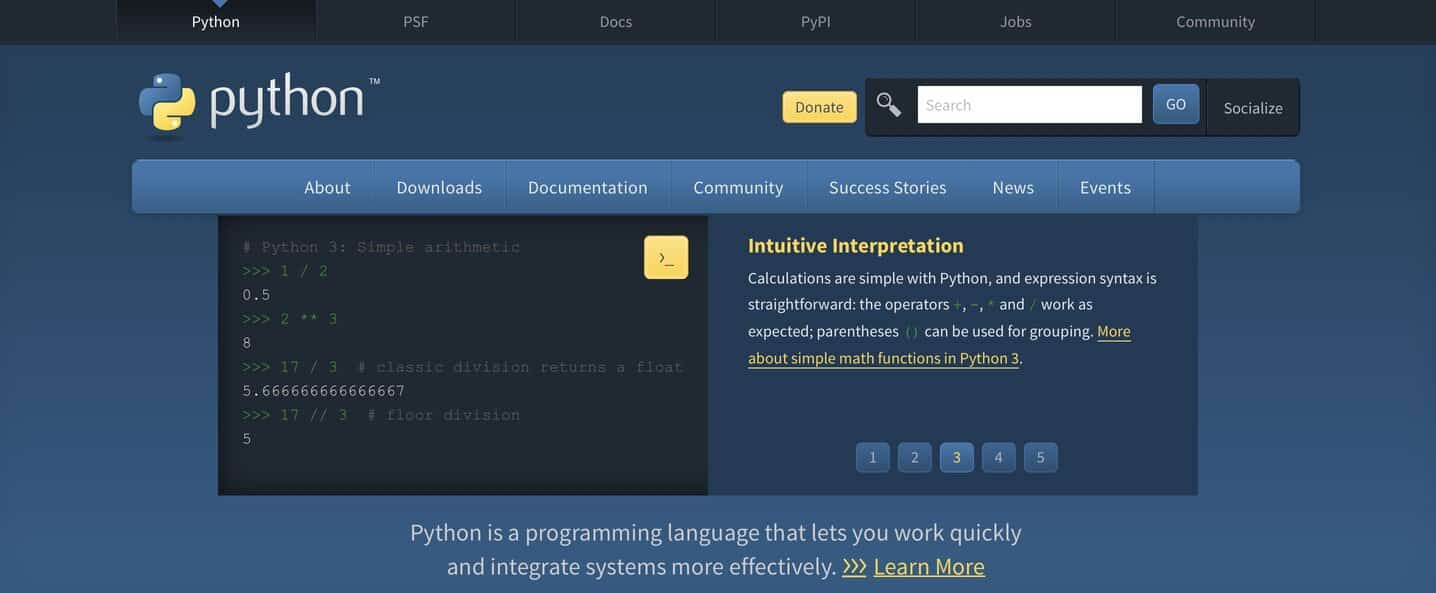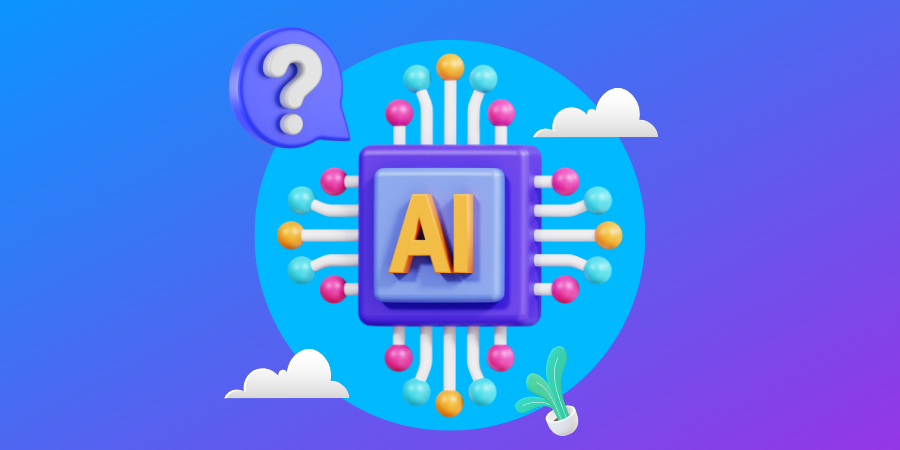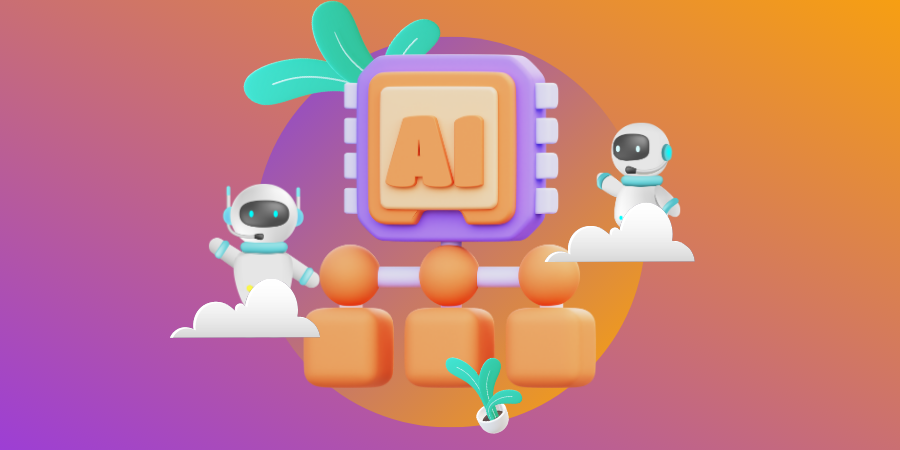74% of global businesses have implemented or are planning to implement some form of artificial intelligence (AI) in the workplace.
Whatever your industry, may it be tech, food and beverage or retail, AI is growing in influence.
But how does AI work exactly?
We discuss this through AI concepts, techniques, programming languages and free tools below. Our article also provides a brief intro on how to build an AI chatbot for your brand.
Digital Silk offers custom proposals. Request a quote
How Does AI Work?
AI works by processing large volumes of data alongside series of instructions, or algorithms. The AI software learns behaviors from the data patterns to independently manipulate algorithms.
The inner workings of AI can be broken down into manageable steps:
Step 1. Data Collection & Input
For AI to work, its engineers need to first collect data, including words, pictures and sounds. The computer needs this data to perform its best.
By clearly defining what the information is about and what you want the computer to do with it, you can make sure the computer understands different types of information and how to work with these.
Step 2. Data Processing
The collected data goes through rapid detailed analysis and decision making, with a record-holding AI computer software running 1.1 quintillion calculations per second, to find similar patterns in real-time data.
Its adaptability depends on the specific model of AI technology being used. The suitability of different machine learning software is impacted by factors like volume of data, resources and budget.
After processing the data, the computer predicts outcomes, deciding if these results and its patterns are successful or not. If there’s a mistake, the computer learns from it and adjusts its rules to work better with the data.
Step 3. Outcomes, Testing & Evaluation
Once the AI has finished its assigned tasks, now is your time to evaluate the results, update with new information and integrate your AI model with your tech systems.
By practicing continuous improvement, you can ensure your AI model provides better results on every trial as it acts on your feedback to deliver greater accuracy or efficiency.
AI Types: The Concepts Of AI
As proposed by Michigan State University’s Arend Hintze, there are four fundamental types of AI:
- Reactive machines
- Limited memory
- Theory of mind
- Self-awareness
However, since self-aware AI isn’t yet a reality or business topic, we’ll be focusing on the first three types:
AI Type 1. Reactive Machines
Reactive machines are the most basic types of AI systems that can’t form or use past experiences to make future decisions.
A typical example of a reactive machine is Deep Blue: IBM’s supercomputer that rose to prominence when it beat the chess world champion, Garry Kasparov, in the 1990s.
The computer identifies chess pieces and knows how to move every one of them. It can also make predictions about an opponent’s move, based on that knowledge.
AI Type 2. Limited Memory
Limited memory systems can look past the present moment and learn from experiences.
An excellent example of these systems is self-driving cars.
By learning from observing the direction and speed of other cars over a prolonged period, they add the obtained knowledge to their own preprogrammed understanding of the world which also includes traffic lights and other vital elements of driving.
AI Type 3. Theory Of Mind
Theory of mind AI tech systems can form their own representations of the world and the entities that make it.
Theory in mind is just that — understanding that living entities in the world have thoughts and emotions and that their behavior is impacted by these thoughts.
Artificial intelligence systems that have this ability can understand motivations and intentions and are the foundation of next-gen AI machines, like ChatGPT.
Meet our expert developers. Schedule A Consultation
The Basic AI Techniques To Use In 2024
AI techniques are the methods that different AI models use to perform the tasks they are set.
These techniques can be used alone or in tandem, depending on the results you hope to achieve from an AI system.
Different techniques translate to varying approaches, meaning that techniques handle some tasks better than others. Some common AI techniques used in 2024 include:
- Supervised learning: Instructing a computer model using labeled data, where the algorithm learns to make predictions by establishing associations between input data and corresponding output labels; this supports tasks like classification, regression, and prediction.
- Unsupervised learning: Allowing the algorithm to independently explore patterns and relationships within unlabeled data, identifying inherent structures or clusters without predefined categories; this supports tasks like clustering, association and dimensionality reduction.
- Reinforcement learning: Involves an agent making decisions in an environment to achieve a goal. The agent learns by receiving feedback in the form of rewards or penalties, improving its decision making over time to help with tasks like predictive text, text summarization, question answering and machine translation.
- Deep learning: A subset of machine learning that uses neural networks with multiple layers to analyze and learn patterns from large datasets, enabling complex tasks like image and speech recognition
- Machine learning: A broader concept encompassing various techniques where algorithms learn from data, improving their performance on a specific task without being explicitly programmed
- Natural language processing (NLP): Enables machines to understand, interpret and generate human language. It involves tasks such as language translation, sentiment analysis and speech recognition
- Computer vision: Teaches machines to interpret and understand visual information from images or videos. It includes tasks like image recognition, object detection and facial recognition
AI Programming Languages: How AI Is Programmed
AI programming is the development of AI applications that can handle automated tasks without the need for extensive human intervention.
The process works by designing and developing machine learning algorithms with the use of AI programming languages.
As of 2024, there are many AI programming languages to use, each offering various levels of scalability, compatibility with existing systems and learning curves.
Five of the major coding languages for AI development used in business are:
1. C++
C++ is excellent for resolving complex AI problems and finding permanent solutions for them.
This language is packed with tools for programming and library functions that enable AI systems to reach their full potential.
It’s useful in processing organized data as it provides full support for object-oriented principles and is suitable for the implementation of the base of specific systems and algorithms.
However, C++’s weakness is that it can’t execute multithreading, where two concurrent programs are executed at once. In other words, multitasking isn’t its forte.
New developers may have a hard time coding AI with C++, as it is prominently in favor of the bottom-up approach.
2. Java
Java’s main advantage is that it is very easy to implement on different platforms.
Its simplistic use has made it very powerful and multi-purpose — it even makes debugging easy. Java has an automatic memory manager that makes a developer’s work easier.
Among the downsides is the fact that Java is slow — slower than C++, for instance. Its execution can be kind of sluggish and takes more response time.
Despite it being portable, that won’t help on older platforms, where Java requires software and hardware changes for it to work properly.

3. Lisp
Lisp is fast and efficient at coding as it is supported by compilers instead of interpreters. This means that code is translated into machine code before the program runs, instead of line-by-line during the process.
This AI tech programming language has one great advantage over the others — it has an automatic memory manager invented for it.
However, Lisp is a rarity. There aren’t many developers acquainted with programming in this language, meaning you may have to pay a premium to work with Lisp or systems connected to Lisp may prove difficult to upkeep.
4. Python
Widely used in AI tech coding, Python has an extensive set of tools and libraries. It also supports testing of algorithms, without the need to implement them first.
This language can increase the overall productivity of a developer by being supportive of object-oriented design. It also works faster than both Java and C++.
One downside is the difficulty of developers accommodating to the new syntax for AI tech programming.
It also works with the help of an interpreter. That makes execution slower in artificial intelligence development, compared to that of C++ and Java.
Finally, Python faces obstacles with AI tech for mobile computing, as its language makes it unstable for mobile.

5. Prolog
With its list of essential tree-based data structures, Prolog has certain advantages over the other programs on this list, such as high efficiency for quick prototyping for AI programs to be released.
However, Prolog’s functionalities are limited, not supporting second-order logic and certain features like graphics. This, along with a steep learning curve, can increase amount and difficulty of work for developers.
Meet our expert developers. Schedule A Consultation
5 Pre-Made AI Tech Tools & Frameworks
Free tools are a great way to experiment with emerging technology, including AI.
Let’s take a look at the following five artificial intelligence tools and frameworks.
1. TensorFlow
TensorFlow is an open-source software library that was developed and used by Google Brain Team researchers.
It has a flexible architecture, allowing developers to “deploy computation to one or more CPUs in a desktop, server or mobile device with a single API,” although this library itself provides multiple APIs.
The lowest-tier API gives total programming control, while the higher-level APIs alleviate repetitive tasks that need to be undertaken among different users.
2. Caffe
Caffe is a framework for creating deep learning systems. It was made to be speedy and modular, as well as very expressive in technical terms.
It was developed by the Berkeley AI research team and its primary focus are networks applied to computer vision.
By design, this tool buoys innovation and application because its models are configured without hard coding.
Caffe also fosters active development, quick research experiments and industry deployment (Caffe can process 60 million pictures at a daily level).
It has a big community of users as it backs academic research, startups and applications in multimedia.
3. Neuroph
This open-source tool is used for creating artificial neural networks, exclusively for Java programs.
Neuroph contains Java’s class library (with a very small number of basic classes) and with its easy Neurons tool, it can facilitate the creation and training of neural networks.
Its GUI neural network editor is convenient, and developers can use it to create their own neural network components.
The neural networks conceived through Neuroph have artificial neuron layers, neuron connections, transfer function, input function, learning rule and more.
This tool also has its own support for image recognition.
4. Apache SystemML
Apache SystemML develops systems that are capable of machine learning using Big Data.
SystemML was created by IBM and it’s renowned for its flexibility and scalability.
It allows multiple execution modes, customization of algorithms and optimization based on data and cluster characteristics.
The additional levels of deep learning deployed with this system include GPU capabilities, importing and running neural networks and more.
5. Torch
Torch is an open-source machine learning library based on the LuaJIT programming language. It boasts a large number of algorithms and flexible tensors for indexing, resizing, cloning and sharing storage, in addition to other features.
With a top-notch interface, linear algebra routines, neural network models, efficient GPU support and embeddable nature, Torch is used by the Facebook AI Research Group, IBM and Yandex, among others.
Its subset, PyTorch, is an open-source machine-learning library for Python and can be used for natural language processing.
How To Build A Chatbot Using AI
One way your business can benefit from pre-made AI frameworks is to create fully functioning AI chatbots.
Considering that 80% of U.S. customers believe AI and chatbots bring at least one benefit to their shopping experiences, chatbots are a direct way to improve your UX.
This is because AI chatbots deliver quick, useful answers to common questions.
Through this, they help direct your customers to relevant areas of further information. Customers can then continue their journey on your site or achieve the purpose of their visit.
To create a chatbot:
- Identify the opportunities for the chatbot
- Define the goals
- Design a conversation
- Build the chatbot using frameworks or non-coding platforms
So how long does it take to build a chatbot?
Take a look at this helpful video by edureka on how to create an AI chatbot using TensorFlow.
Some of the most advanced platforms that are designed to help developers build chatbots are:
Digital Silk offers custom proposals. Request a Quote
Utilize AI In Your Digital Solutions With Digital Silk
Ultimately, AI has the power to engage customers, improve user experience and help your business boost revenue while integrating the latest technology.
However, AI is complex.
From programming languages to AI models and techniques, building custom AI solutions to boost your brand’s offerings is no small feat.
This is where partnering with experts like Digital Silk comes in.
Whether integrating AI-based tools or plugins to your custom web design or implementing AI into content marketing strategies, we keep a finger on the pulse of the latest technological advancements.
As a full-service web design agency, we provide a range of services such as:
- Web design
- Web development
- Digital branding
- Digital marketing
Other than our tech-inspired team, we make sure to deliver a trio of unique values for every client:
- Project ownership
- Total transparency
- Measurable results
Contact our team, call us at (800) 206-9413 or fill out the Request a Quote form below to kickstart your digital journey.
"*" indicates required fields









